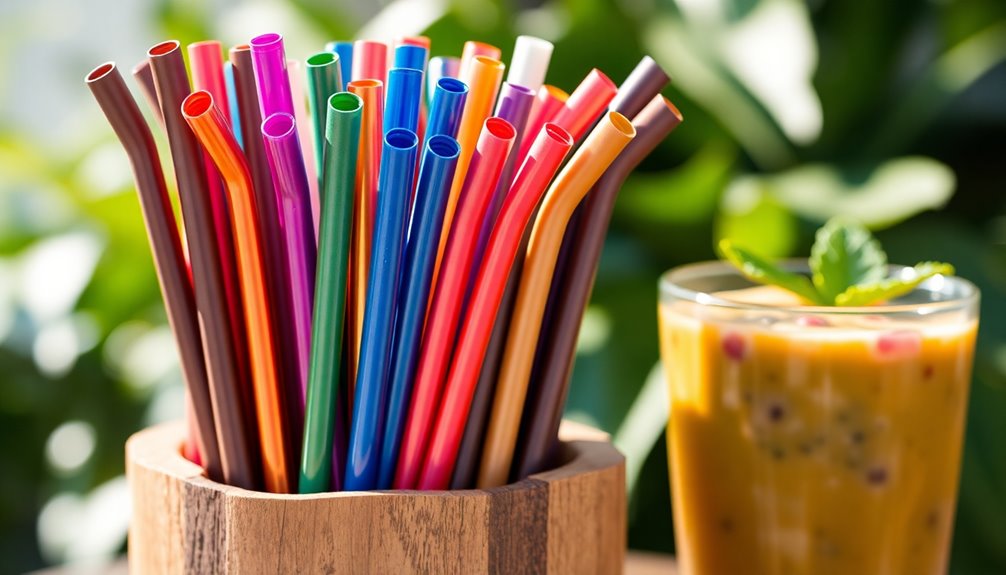Introduction
Plastic straws have been part of daily life for decades, but their environmental impact is now impossible to ignore. Millions of single-use plastic straws end up in landfills and oceans every year, contributing to pollution and harming marine life. In response, eco-friendly alternatives have become popular, offering both sustainable choices for consumers and a responsible image for businesses. If you’ve been wondering how to make the switch, this guide will walk you through the different types of drinkin..straws, their pros and cons, and how to choose the best option for your needs.
Why Switch to Eco-Friendly Straws?
The primary reason to switch away from plastic is environmental responsibility. Plastic straws take hundreds of years to decompose, while eco-friendly materials like bamboo, paper, and wood are biodegradable, compostable, and renewable. Businesses that adopt greener options also build stronger connections with environmentally conscious customers.
Popular Types of Drinking Straws
When exploring sustainable choices, you’ll find a wide range of eco-friendly straws on the market. Let’s break them down.
Paper Straws
Paper straws are one of the most common alternatives to plastic. They are biodegradable and designed for single use. Pros: Affordable, compostable, available in many colors and designs. Cons: Not as durable, they may soften if left in liquid for too long. Best For: Cafes, restaurants, and events where style and disposability matter. Learn more here: Types of drinking straws.
Bamboo Straws
Bamboo straws are natural, reusable, and made from sustainably harvested bamboo stalks. Pros: Durable, reusable, biodegradable, and chemical-free. Cons: Require cleaning and proper care to prevent mold. Best For: Eco-conscious households, restaurants with a sustainability theme.
Wooden Straws
Wooden straws are less common but are gaining popularity as an elegant and eco-friendly choice. Pros: 100% natural, biodegradable, sturdy in hot or cold beverages. Cons: Limited availability and higher cost compared to paper. Best For: Specialty cafes, eco-themed events, premium dining settings.
Metal Straws
While not disposable, stainless steel straws have become a favorite for people seeking a reusable solution. Pros: Long-lasting, stylish, dishwasher-safe. Cons: Not suitable for large events requiring disposables, higher upfront cost. Best For: Individual use, sustainable households, and gift sets.
Glass Straws
Glass straws combine reusability with an elegant design. Pros: Reusable, transparent, easy to clean, stylish. Cons: Fragile, not suitable for kids or travel. Best For: Home use, specialty drinks, eco-friendly restaurants.
Edible Straws
Some companies now produce straws made from pasta, rice, or even sugar. These straws are single-use but add a fun twist. Pros: Compostable and sometimes even edible. Cons: Limited durability, short lifespan in liquid. Best For: Parties, themed events, and novelty drinks.
How Businesses Benefit from Eco-Friendly Straws
Switching to sustainable options doesn’t just help the planet—it also improves a brand’s image. Customers are more likely to support cafes, restaurants, and bars that actively reduce plastic waste. Many governments are also moving to ban or restrict plastic straws, making the switch not just a choice but a necessity. By using straws from trusted suppliers like anzhucraft.com, businesses can ensure quality, variety, and compliance with eco-friendly standards.
Tips for Choosing the Right Straw
When selecting eco-friendly straws, consider the following:
Purpose of Use – For events, disposables like paper or wood may work best. For personal use, bamboo or metal is more practical.
Cost and Budget – Paper straws are cost-effective for bulk orders, while bamboo and wood offer premium appeal.
Customer Preferences – Eco-conscious customers often value natural materials such as bamboo or wood over plastic or synthetic blends.
Environmental Impact – Choose compostable or biodegradable materials to minimize waste.
Durability – Match the straw material to the type of drinks you serve (hot, cold, thick smoothies, etc.).
Eco-Friendly Straws vs. Plastic: A Quick Comparison
| Feature | Plastic Straws | Eco-Friendly Straws (Paper, Bamboo, Wood) |
|---|---|---|
| Decomposition Time | 200–500 years | Weeks to a few months |
| Environmental Impact | High | Low |
| Reusability | No | Some (bamboo, metal, glass) |
| Cost (Bulk) | Low | Affordable to premium |
| Customer Appeal | Declining | Growing rapidly |
The Future of Sustainable Straws
With global awareness of plastic pollution growing, eco-friendly drinking straws are no longer a trend—they are the future. From paper to bamboo, these sustainable alternatives are reshaping how we consume beverages. Businesses that embrace eco-friendly practices today are better positioned for long-term success.
FAQs About Eco-Friendly Straws
Q1: Are paper straws safe? Yes, they are food-grade, biodegradable, and safe for both kids and adults.
Q2: Can bamboo straws be reused? Absolutely. With proper cleaning and drying, bamboo straws can last for months.
Q3: Are eco-friendly straws more expensive than plastic? In the short term, yes, but the long-term environmental and branding benefits outweigh the cost.
Q4: Which straws are best for parties? Paper straws are ideal for parties as they are affordable, customizable, and compostable.
Q5: Where can I buy eco-friendly straws? You can explore a wide selection at trusted suppliers like anzhucraft.com.
Conclusion
Switching to eco-friendly drinking straws is a small but powerful step toward a cleaner planet. Whether you choose paper, bamboo, wood, or reusable options, each choice helps reduce plastic waste and supports a sustainable future. For individuals and businesses alike, making the switch isn’t just about replacing a straw—it’s about making a statement of responsibility and care for the environment.

